VR Arcades Study: Haptics Boosts Replays by 20%
Posted; July 4, 2019
Is it possible to quantify the impact of adding haptic feedback to VR experiences? The results of a study by Ultraleap, Fallen Planet Studios and the ImmotionVR network of virtual reality arcades suggests it is.
The startling truth about haptics
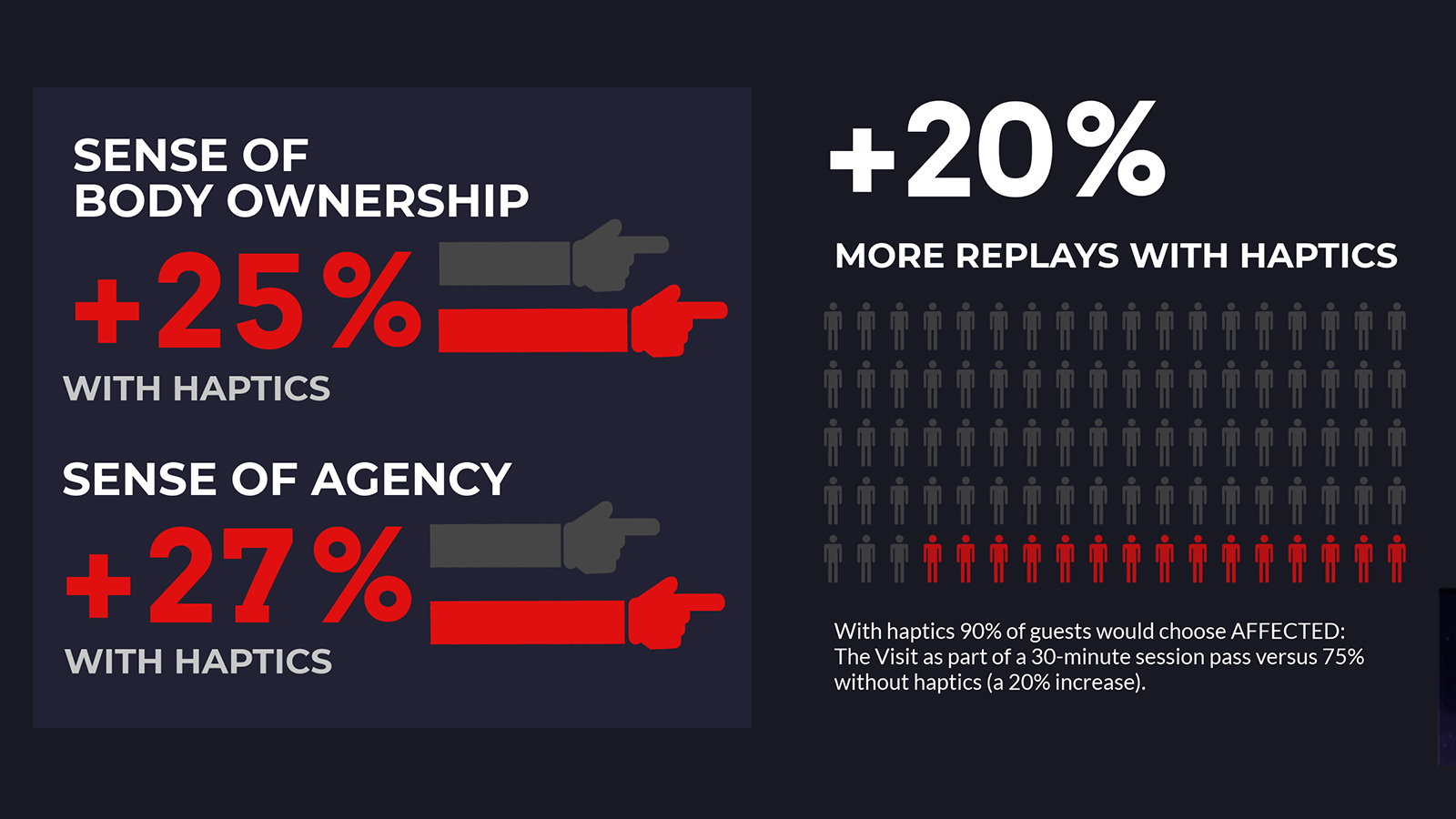
83% of virtual reality arcades identified horror as one of their most popular genres, a 2017 survey of 200 VR arcades around the world found. And, from the touch of an ice-cold hand to the unexpected brush of something across the back of your neck, the sensation of touch (whether imagined or directly experienced) has always been a key part of the horror genre.
Haptic technology – i.e. technology that simulates the sense of touch – enables the addition of tactile sensations to VR. In partnership with leading VR development studio Fallen Planet Studios and the ImmotionVR network of VR arcades, we set out to find out if we could quantify what difference adding haptic technology to a VR horror experience made.
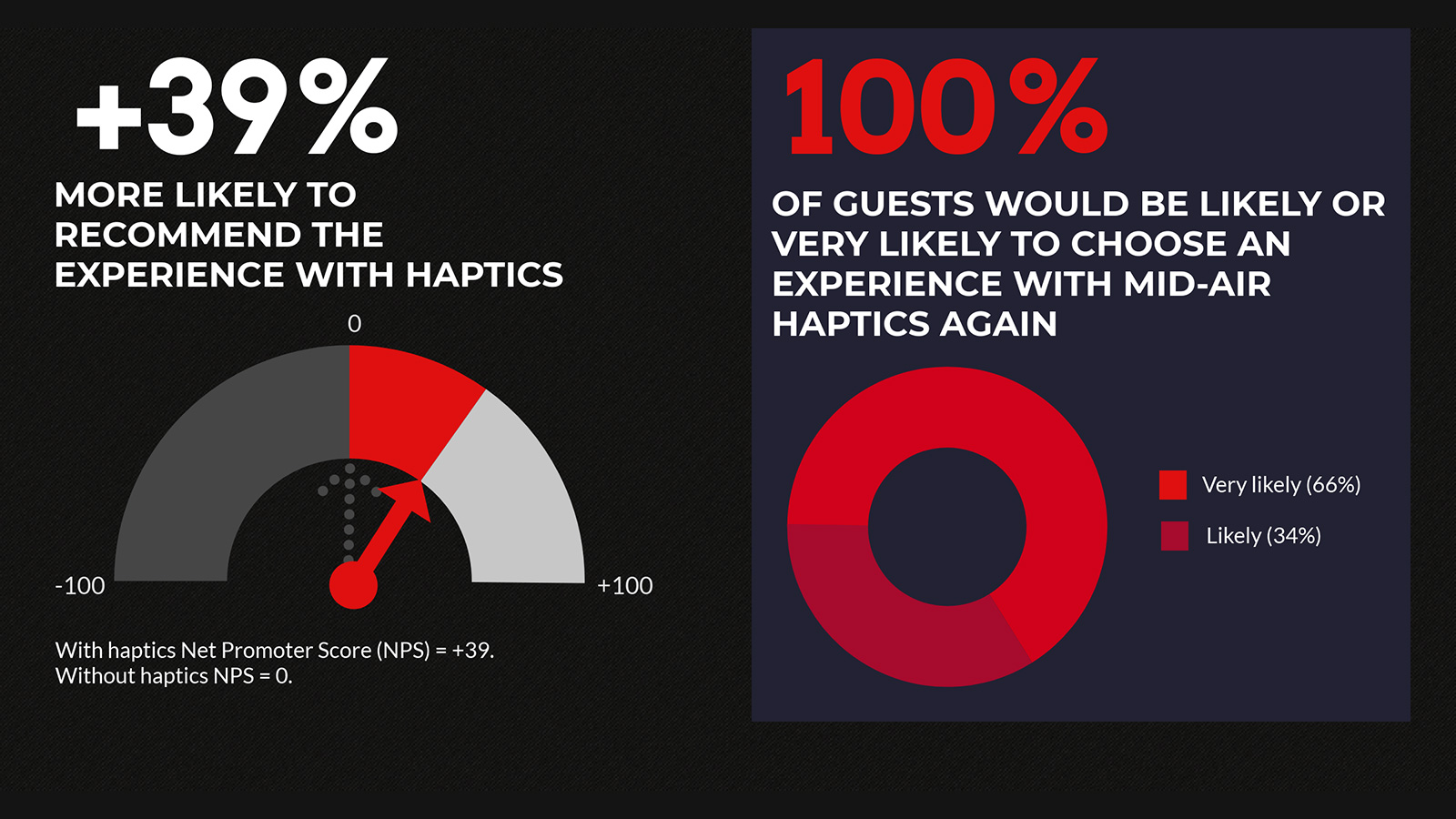
AFFECTED: The Visit is a 3-minute VR horror experience extending Fallen Planet’s existing AFFECTED IP. Hand tracking enables guests to interact with it using only their hands (no controllers are required), and Ultraleap's mid-air haptic feedback provides tactile sensations.
We tested the experience with and without haptics in one of Immotion’s VR arcades to see if we could measure the difference.
VR ARCADE GUESTS FELT MORE IMMERSED IN THE EXPERIENCE
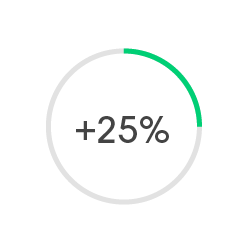
HAPTICS INCREASES REPLAYABILITY IN VR ARCADES
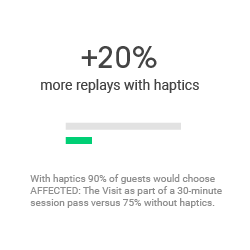
100% of study participants would choose an experience with mid-air haptics again (66% would be “very likely” and 34% would be “likely”. Not one participant gave a neutral or negative answer.)
NET PROMOTER SCORE JUMPED FROM NEUTRAL TO POSITIVE
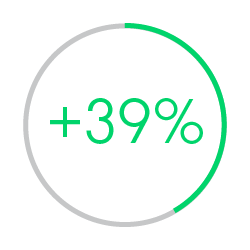
HAPTIC TECHNOLOGY HAS A LONG HISTORY IN VR ARCADES
Arcades have always been pioneers of haptic technology: the first consumer use of haptics was in video game arcades in the 1970s. Our study shows that modern haptic technology has a measurable impact. It creates premium out-of-home experiences that make people more deeply immersed in experiences, more likely to recommend them to friends, and likely actively to choose experiences that incorporate haptics.